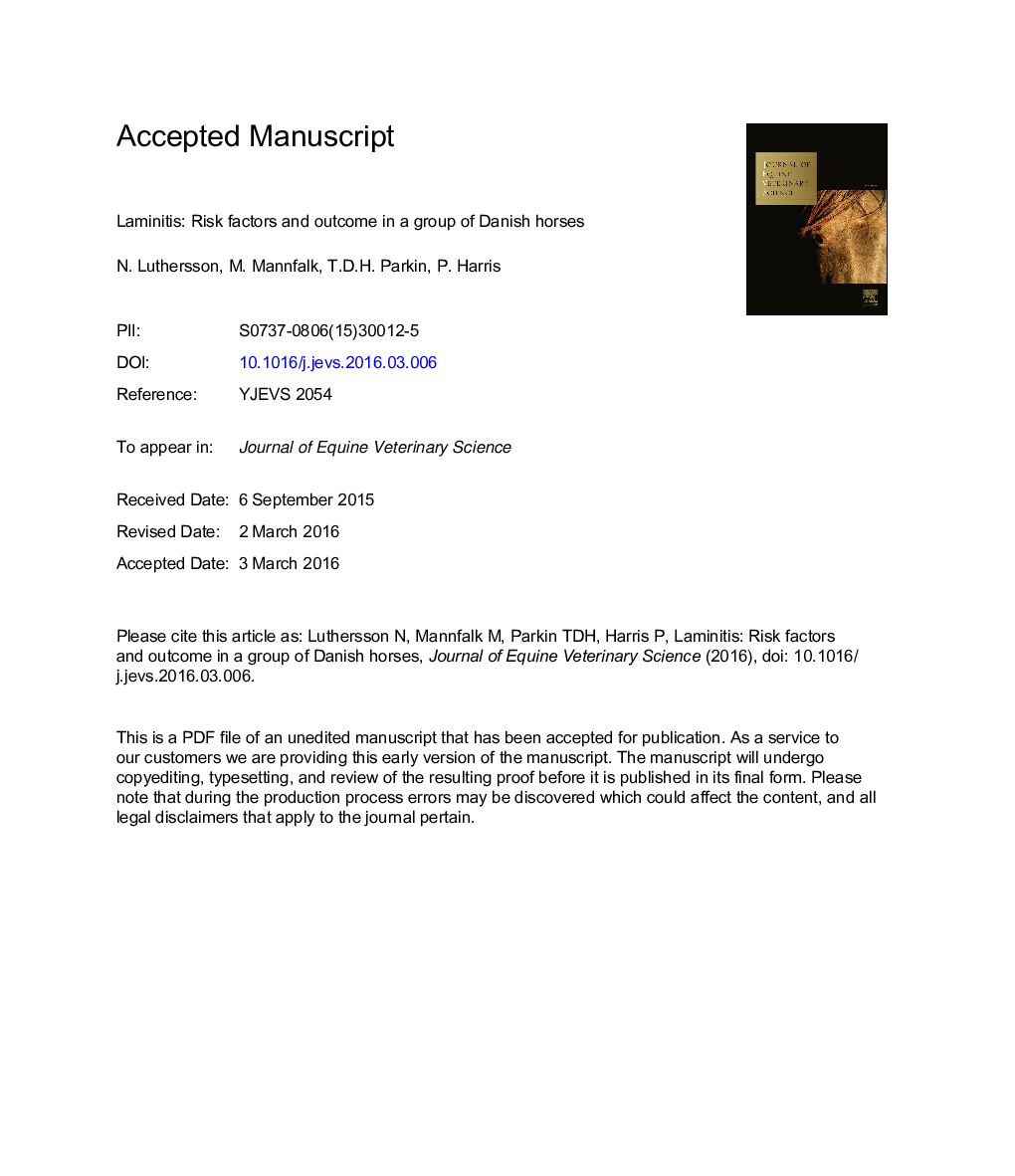| کد مقاله | کد نشریه | سال انتشار | مقاله انگلیسی | نسخه تمام متن |
|---|---|---|---|---|
| 5535646 | 1551547 | 2017 | 16 صفحه PDF | دانلود رایگان |
عنوان انگلیسی مقاله ISI
Laminitis: Risk Factors and Outcome in a Group of Danish Horses
ترجمه فارسی عنوان
لامینیت: عوامل خطر و نتیجه در گروه اسب دانمارکی
دانلود مقاله + سفارش ترجمه
دانلود مقاله ISI انگلیسی
رایگان برای ایرانیان
کلمات کلیدی
نژاد، مرغ، تغییر دادن، چمن، نتیجه
موضوعات مرتبط
علوم زیستی و بیوفناوری
علوم کشاورزی و بیولوژیک
علوم دامی و جانورشناسی
چکیده انگلیسی
Recent systematic reviews have highlighted the lack of quality information with respect to the epidemiology of equine laminitis. The objectives of this study were to identify in Denmark, the risk factors for new (i.e., not believed to have suffered from laminitis previously) cases of laminitis (NL) and to look at the outcome and incidence of repeated episodes of laminitis in these animals as well as those which had previously suffered an episode of laminitis (i.e., chronic cases) over the following 12Â months. Information was obtained from 110 veterinary diagnosed cases of laminitis (69 new and 41 chronic) and 80 control animals (the next nonlaminitic horse/pony seen by that participating practice). All animals were followed for up to 1 year. Univariable and multivariable conditional logistic regression was conducted for the NL case-control pairs. Variables were retained within the final multivariable models if the likelihood ratio P value was <.05. There was no association between sex or gender and laminitis. A recent change of grass, being on what was considered high-quality grass and being a cold-blooded type, <149Â cm (i.e., Shetland, Fell, Welsh, or Dartmoor pony, Icelandic horse, Norwegian fjords, or a mix of these breeds) were all significant risk factors for laminitis. Although cresty neck score and body condition score were significantly associated with NL at the univariable screening stage, they were found to be confounders of breed and each other during the multivariable model building process. Other factors such as weight and estimated starch intake were not found to be significant. Thirty-three percent of all the laminitis cases had been humanely destroyed within 12Â months of diagnosis, mainly for laminitis-associated reasons, compared with only 7.5% of the controls (none for laminitis associated reasons). This study confirms the importance of grass turnout and breed on laminitis risk. Horses in work at the time of diagnosis as well as those diagnosed in the winter and spring were more likely to be humanely destroyed within the next 12Â months than those not in work or diagnosed in the autumn and summer.
ناشر
Database: Elsevier - ScienceDirect (ساینس دایرکت)
Journal: Journal of Equine Veterinary Science - Volume 53, June 2017, Pages 68-73
Journal: Journal of Equine Veterinary Science - Volume 53, June 2017, Pages 68-73
نویسندگان
Nanna Luthersson, Maria Mannfalk, Tim D.H. Parkin, Patricia Harris,
